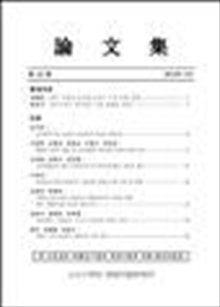간행물
大田大學校 環境問題硏究所 論文集 대전대학교 환경문제연구소 논문집 Journal of The Institute of Environmental Studies

- 발행기관 대전대학교 환경문제연구소
- 자료유형 학술지
- 간기 연간
- ISSN 2287-1527 (Print)
- 수록기간 1996 ~ 2016
- 주제분류 공학 > 환경공학 공학 분류의 다른 간행물
- 십진분류KDC 539DDC 628
권호리스트/논문검색
제17호 (2013년 2월) 8건
환경자료
1.
2013.02
구독 인증기관 무료, 개인회원 유료
4,000원
2.
2013.02
구독 인증기관 무료, 개인회원 유료
4,000원
3.
2013.02
구독 인증기관 무료, 개인회원 유료
This study was to look out a better water quality of Tumen river by observing the variation of quality and causes of pollution for 30years since 1977 the negotiations between China and North Korea to present. China decreased industrial wastewater discharge and COD load by 71% and 94%, respectively through constant efforts since negotiation to present. But Tumen river is a boundary river so that the water quality should not be solved only by China. As the economics of North Korea recovers, industrial wastewater will be a big problem for a potential risk factor and it must to resolve by the negotiation between two countries. The main pollution sources in China are Chenming paper industry company, Shixian paper industry company and the urban sewage by population growth of Yanbian. Beneficiation wastewater of Musan iron mine has become a big SS pollution problem, and industrial wastewater including the strong organic matter and volatile phenol from Aoji chemistry company would have been a problem in North Korea. According to the ‘12.5’planning to improve water quality in Tumen river, the government planned bad V class(worse than 40mg/L COD) which occupies 9.7% of the water quality area presently to less than V class, and I~III class which occupies 71% to more than 80%. Construction of sewage treatment plants should be urgently needed in Yanji, Hunchun and 5 other cities.
4,500원
4.
2013.02
구독 인증기관 무료, 개인회원 유료
In order to prove that perchlorate-laden resins could be bio-regenerated through direct contact with anaerobic microorganisms, two bio-regeneration systems, internal and external, were tested. Anaerobic digestion was demonstrated to be very efficient in degrading perchlorate that had been adsorbed onto A520E resin. The internal bio-regeneration test showed that the fully exhausted resins recovered about 80% of the perchlorate-exchange capacity after 4 weeks of bio-treatment in the anaerobic digester. The bio-regeneration efficiency of the external system increased with the amount of flow passed through the column. Comparison of two perchlorate breakthrough curves obtained from column test, one with virgin resin and the other with bio-regenerated resin, proved that the bio-regenerated resin could be used repeatedly to treat perchlorate in spent or waste brine. The A520E resin was very stable in the anaerobic digester and its perchlorate-exchange capacity was barely changed during 26 weeks of incubation. The most significant contribution of this research is to develop the concept of direct bio-regeneration of exhausted resins by combining physicochemical ion-exchange and biological reduction technology, especially for the removal of perchlorate.
4,000원
5.
2013.02
구독 인증기관 무료, 개인회원 유료
H2S adsorption characteristics of adsorbent made by fallen leaves were investigated. For analyses of the manufactured adsorbent, various methods such as scanning electron microscope(SEM) and measurements of BET surface area were adopted. As major adsorption characteristics, adsorption equilibrium capacity was measured by using a batch type experimental apparatus for operating variables such as adsorption temperature(25~45℃) and adsorbent types. The experimental result showed that the H2S adsorption equilibrium capacity of adsorbent made by fallen leaves decreased with increasing adsorption temperature due to physical adsorption phenomena. It was also found that the H2S adsorption capacity of the adsorbent increased remarkably by an acid treatment with HCl solution.
4,000원
6.
2013.02
구독 인증기관 무료, 개인회원 유료
Ocean discharge of sewage sludge, which started in the year of 1993 in Korea, was stopped in the beginning of 2012, Landfill of sewage sludge was also prohibited in 2003 owing to public acceptance of the lanfill sites, and partially reopened in 2007 due to the necessity of organic component in sludge to produce methane gas. Sludge recycle ratio will increase in sewage sludge treatment by volume reduction and drying, and then recycle of the thermal energy as fuel in power plant and also material as raw material of cement. Several drying processes are compared with reasoning and an appropriate drying sequence is suggested.
4,000원
7.
2013.02
구독 인증기관 무료, 개인회원 유료
This study was decontaminant to use hydrogen peroxide(H2O2), surfactant and microbial and to use field contaminated soil experiment was to evaluate the adequacy and processing possibilities. A chemical oxidation was applied to using 5% concentration hydrogen peroxide more than 75% removal efficiency for TPH. Surfactant result of using SOR-100 1% 5,066 mg/kg to 796 mg/kg as the highest efficiency. Microbial injected 106 CFU/g soil in the soil by 45 days result of low-contaminated soil 1,325 mg/kg, removal rate was 57.7%.
4,200원
8.
2013.02
구독 인증기관 무료, 개인회원 유료
The purpose of this study is to get basic data for the application of coagulants for treating an industrial wastewater containing NBD COD. The NBD COD concentration of the target wastewater was calculated to be 61 mg/L, which was about 72% of the first stage treated water, and this shows that there must be advanced wastewater treatment process. When Alum(8%) was injected in raw the water, 150ppm was the best dosage and 41% CODmn removal efficiency was obtained. When Alum(8%) was injected in the discharge water, 150ppm was the best dosage, and 19% CODmn removal efficiency was obtained. When powdered activated carbon was injected, 40ppm was the best dosage, 26% CODmn removal efficiency was obtained. The method of injecting Alum(8%) in the discharge water was suitable, when the effluent exceeds the water quality standard by 20%, and the method of injecting the powdered activated carbon was suitable, when the effluent exceeds the water quality standard by 20~40%.
4,000원

